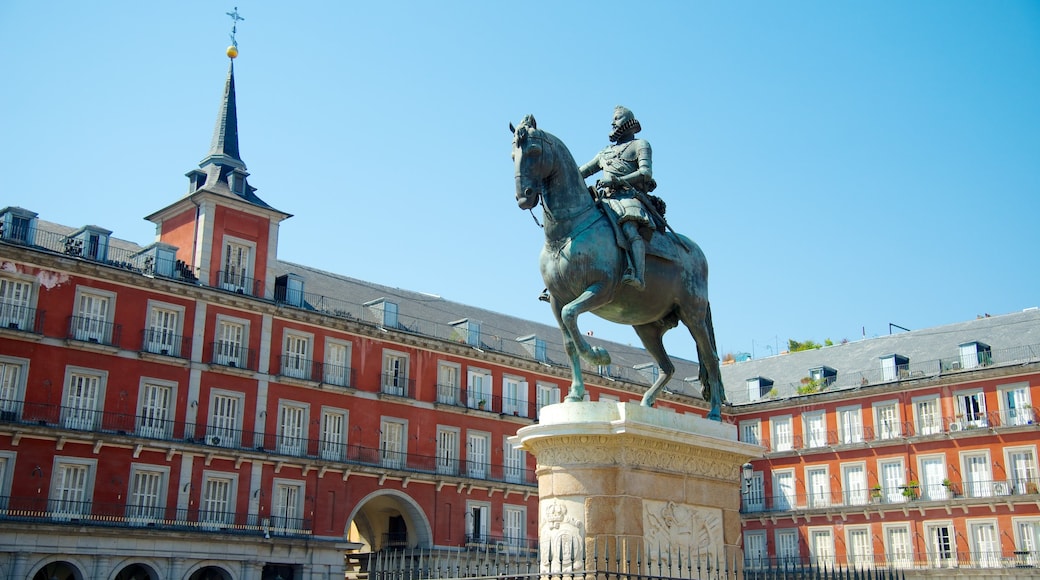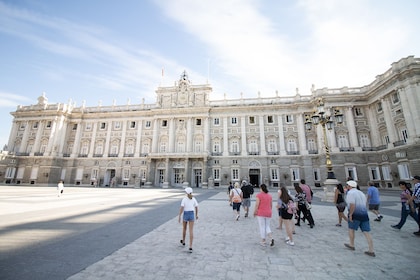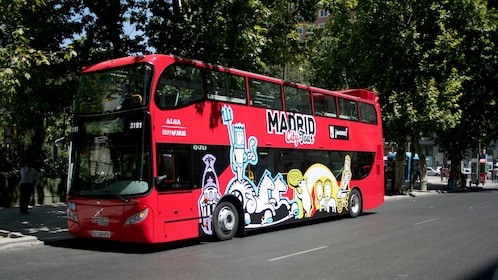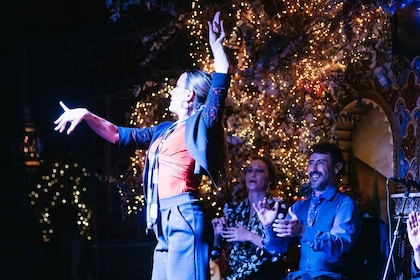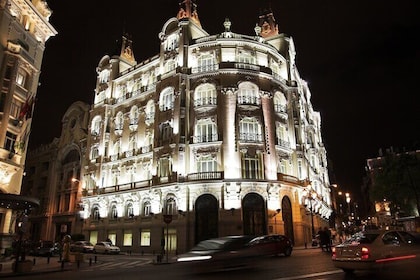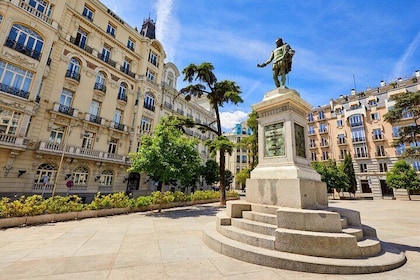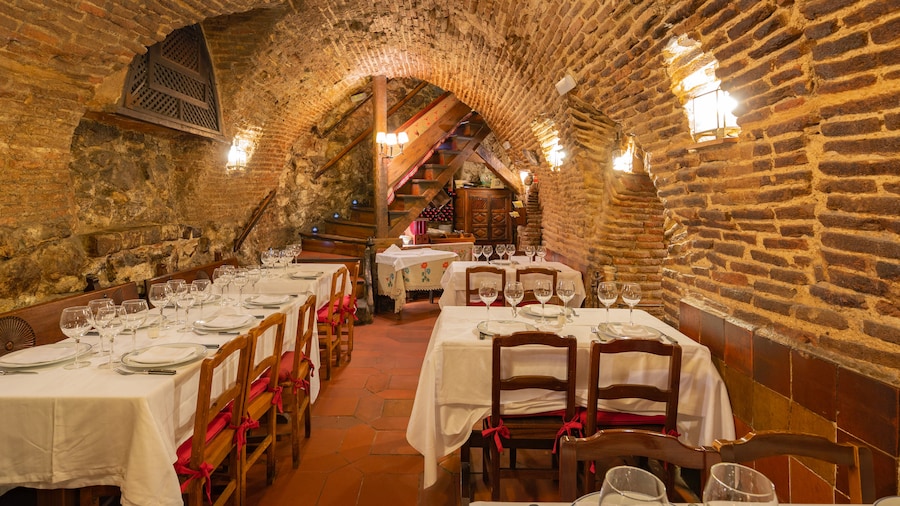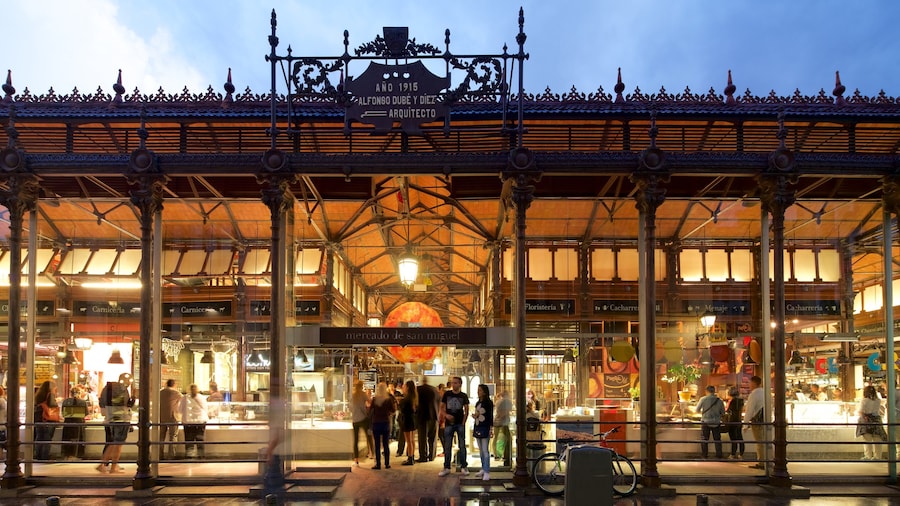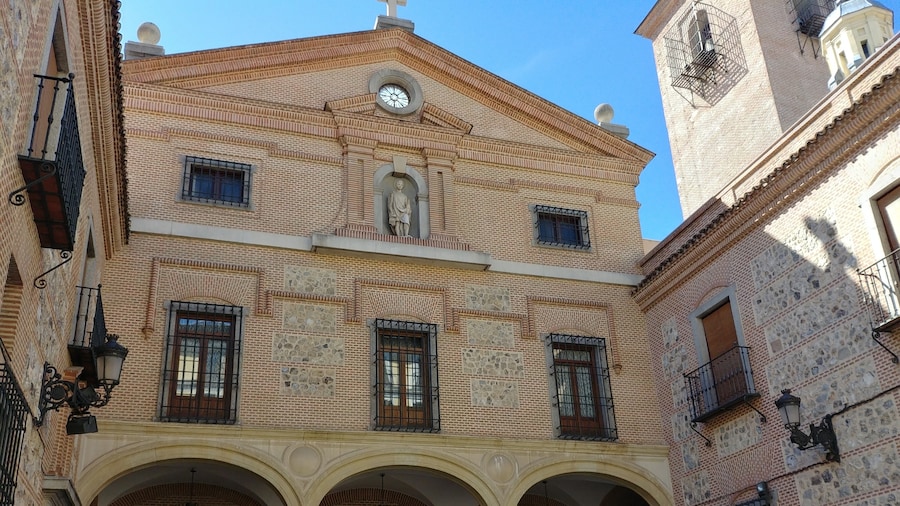A square-shaped piece of Madrid's soul – a sheltered 17th century quadrangle that has seen bull-fights and fiestas, fires and protests and kings that come and go.
Madrid is a city of many squares, plazas and parks – but none are quite like the Plaza Mayor. Sitting right in the heart of old Madrid, not only is it one of the city's oldest and biggest – it is probably its most breath-taking. Built to a design of 16th century artist Juan de Herrera, it was the 1790 reconstruction by Juan de Villanueva that stood the test of time (two other efforts burned down in great fires). But what all the designs shared, and what makes the Plaza Mayor so special, is its four-sided, three-storey high wall of arcaded housing – ringed by balconies, topped by towers, and painted with bright murals.This all-enfolding arcade turns this Plaza into its own rectangular universe, lending any event held here – and there have been many over its four-centuries – an other-worldly quality. Step into the cobbled Plaza Mayor, through one of its arched gateways, and the hustle and bustle of Madrid's tightly packed streets is immediately left behind. Inside you could find Sunday morning markets, public celebrations, a fiesta or a concert.In the cloistered arcades around the edge of the Plaza, you'll discover an array of boutique shops, selling antique toys, souvenirs, designer clothing and jewellery. They all have one thing in common, though – a high price-tag. You'll also find several equally charming (and equally expensive) restaurants and bars here. But finding a place at an open-air table on the Plaza Mayor and idling away the afternoon isn't an expense – it's priceless. After all, this is a square that has witnessed most of Madrid's historical twists and turns.The beatification of Madrid's patron saint – Saint Isidore – took place here in 1619. Thousands have crammed into its vast open space to watch bull-fights, in celebration of royal births or marriages. More grisly were the notorious acts of the Inquisition – the autos-da-fé – which saw the ritual condemnations of heretics. They would be executed here on the Plaza, burnt at the stake, garrotted, or hung from a gallows. And at one point in the last century, this pedestrian precinct had trams noisily running through it.
